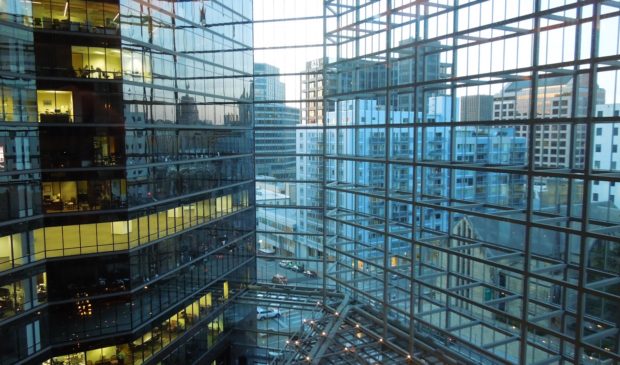Can an expanded convention center solve the ‘downtown puzzle’?
Wednesday, July 12, 2017 by
Jack Craver After months of research, city staff has come up with a few ways that City Council can find money to begin solving the so-called “downtown puzzle,” the expression used by Mayor Steve Adler to describe a host of potential downtown projects that could benefit the city.
Those projects include expansion of the Austin Convention Center and the Mexican American Cultural Center, infrastructure improvements related to the Dell Medical Center Innovation Zone, and more general improvements aimed at easing congestion, supporting the arts and reducing homelessness.
In a memo to Mayor Steve Adler and City Council earlier this month, Greg Canally, the city’s interim chief financial officer, suggested that the city could generate additional dollars by extending the Waller Creek tax increment financing district or by raising the Hotel Occupancy Tax as part of a plan to expand the Austin Convention Center.
The memo comes on the heels of a recommendation by the Visitor Impact Task Force to expand the convention center by raising the HOT rate by 2 percent, putting the total tax levied on hotel guests in Austin at 17 percent, the maximum allowed under state law. Six percent of that total goes to the state, while the rest the city uses on the convention center and other projects or marketing related to tourism.
The task force also recommended the creation of a tourism public improvement district, which would allow hotels to levy a 2 percent tax on guests to fund additional city efforts to promote tourism.
While there are a number of ways the city could finance an expansion, Carla Steffen, the chief financial officer for the Austin Convention Center, agrees that hiking the HOT rate would yield the greatest benefit for the city.
Raising the HOT rate will generate enough money – a projected $600 million – to expand the center but it could also free up other funds to spend on other projects that Council members have been pushing, she explained in an interview with the Austin Monitor on Tuesday. Potential uses include preservation of historic properties in the Red River Cultural District or turning the nearby Palm School building into a museum.
In addition, the increased revenue could allow the convention center to retire debt related to the previous expansion (approved by voters in 1998) earlier than expected. While the city is on target to retire that debt by 2029, Steffens has said with the new revenue the convention center could get it done by 2021.
With that debt retired, the city would be able to get rid of a separate 2 percent “venue” tax on hotel guests, thereby offering Travis County the opportunity to impose its own 2 percent hotel tax to finance tourism-related projects that it wants to pursue.
Mayor Pro Tem Kathie Tovo, who has been outspoken about the need to find new funding sources for downtown improvements, said in an interview Tuesday that she is not yet convinced that expanding the convention center is a good idea but that she will review figures on visitors and events to determine whether it’s “financially prudent.”
Tovo was much more optimistic about the idea of extending the Waller Creek TIF district.
The TIF district, put in place in 2008, is on track to close in around 2030, said Canally. The way TIF works is that a city will issue debt to make investments in infrastructure or other developments in a designated area with the expectation that those improvements will lead to higher property values and increased property tax revenue, which the city then uses to pay off the debt.
While the TIF district was originally put in place to fund the mile-long Waller Creek tunnel that the city deemed essential for flood control, Canally suggested that, by maintaining the district until 2041, the city could invest future TIF dollars on surface improvements outlined in the Waller Creek District Master Plan, including a chain of parks connected by trails along the creek.
Additional money for the improvements would come from the Waller Creek Conservancy, a nonprofit that entered a partnership with the city in 2011 to help raise money to finance the master plan.
“We have a really good partnership with the conservancy,” Canally told the Monitor. “They’ve done a lot of fundraising.”
In addition to helping to “fulfill the vision” of the master plan, Tovo suggested that some of the money could be used to address homelessness, such as building shelters or housing.
Photo by Robert Lyle Bolton made available through a Creative Commons license.
The Austin Monitor’s work is made possible by donations from the community. Though our reporting covers donors from time to time, we are careful to keep business and editorial efforts separate while maintaining transparency. A complete list of donors is available here, and our code of ethics is explained here.
You're a community leader
And we’re honored you look to us for serious, in-depth news. You know a strong community needs local and dedicated watchdog reporting. We’re here for you and that won’t change. Now will you take the powerful next step and support our nonprofit news organization?








